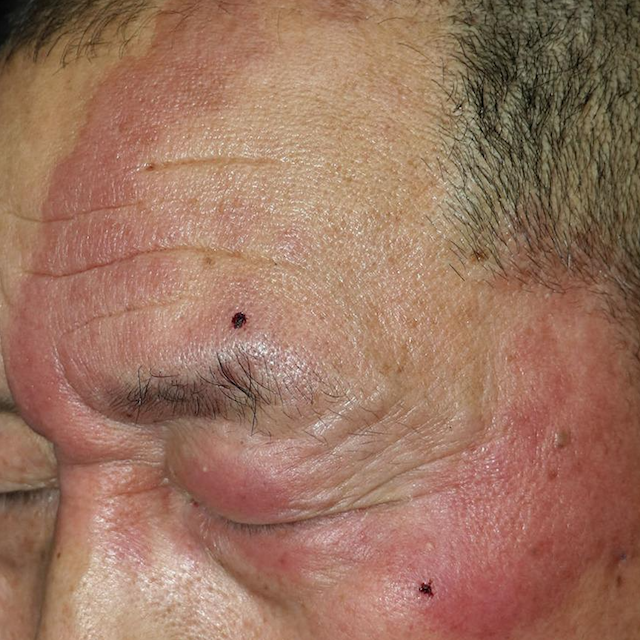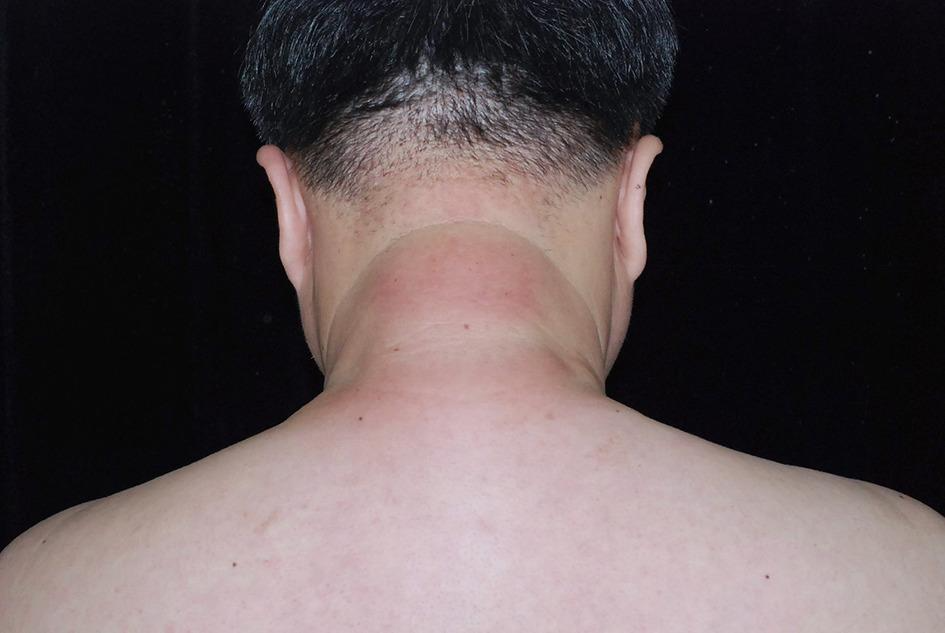(BMJ)—A man in his 50s presented with a 6-year hx of an asymptomatic, well defined 12-cm diameter lesion that had been unresponsive to topical terbinafine. The patient had some loss of fine touch sensation and nociception, but peripheral nerves weren't palpable or tender. Acid fast bacilli in skin smears and results from nested PCR and DNA sequencing confirmed the dx. What is it?

|
mycosis fungoides
|
|
erythema annulare centrifugum
|
|
tinea faciei
|
|
borderline tuberculoid leprosy
|
(BMJ)—This image shows a progressive, tight, erythematous, and hardened plaque that developed over 3 months on the neck of a man in his 40s. A skin biopsy sample showed thick collagen bundles with cleft-like spaces, without abnormalities in the epidermis. Colloidal iron staining showed mucin deposition among collagen bundles in the deep dermis. What’s the dx?

|
scleroedema diabeticorum
|
|
morphea
|
|
amyloidosis
|
|
cellulitis
|
